Small bathrooms present unique challenges when it comes to flooring: you need materials that maximize space, resist moisture, and elevate the overall design without overwhelming the room. From budget-friendly yet stylish options like luxury vinyl tile to more bespoke solutions such as encaustic cement tiles, there’s a wealth of flooring ideas that can transform a tiny powder room into a chic retreat. In this article, we’ll explore 20 distinct flooring concepts—each accompanied by practical insights on installation, maintenance, and aesthetic impact—to help you choose the perfect foundation for your compact bathroom space.
1. Luxury Vinyl Tile (LVT)
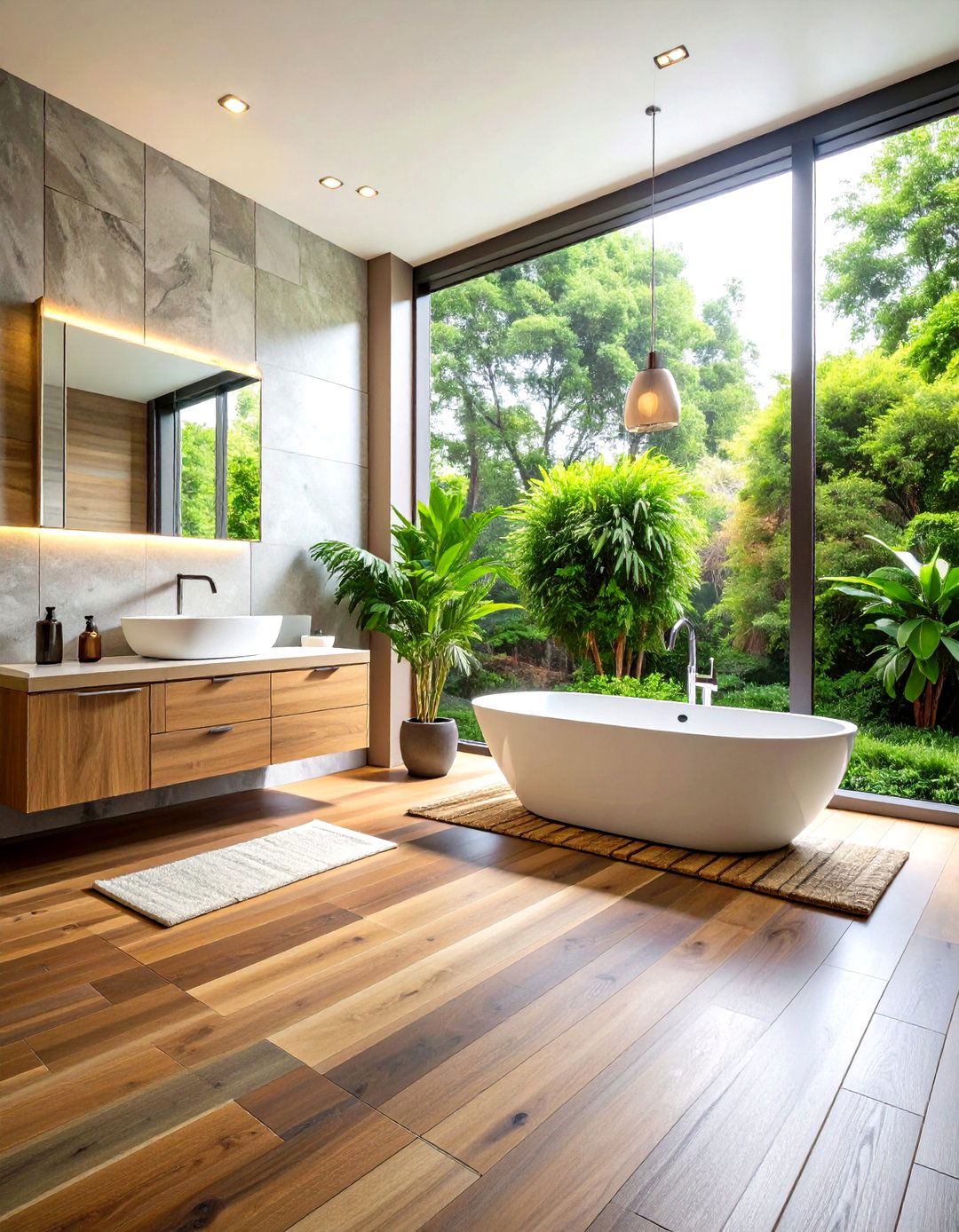
Luxury Vinyl Tile (LVT) mimics the look of natural materials—marble, stone, or hardwood—while offering superior water resistance, durability, and ease of installation. Its thin profile and click-lock systems make it ideal for tight spaces, and its vast array of styles ensures you can find a pattern that complements any décor. LVT’s resilience to steam and spills means less worry about warping or staining, and its low maintenance requirements—simply sweep or mop—keep even the smallest bathrooms looking pristine. Many manufacturers offer waterproof cores, further safeguarding against moisture damage.
2. Ceramic and Porcelain Tile
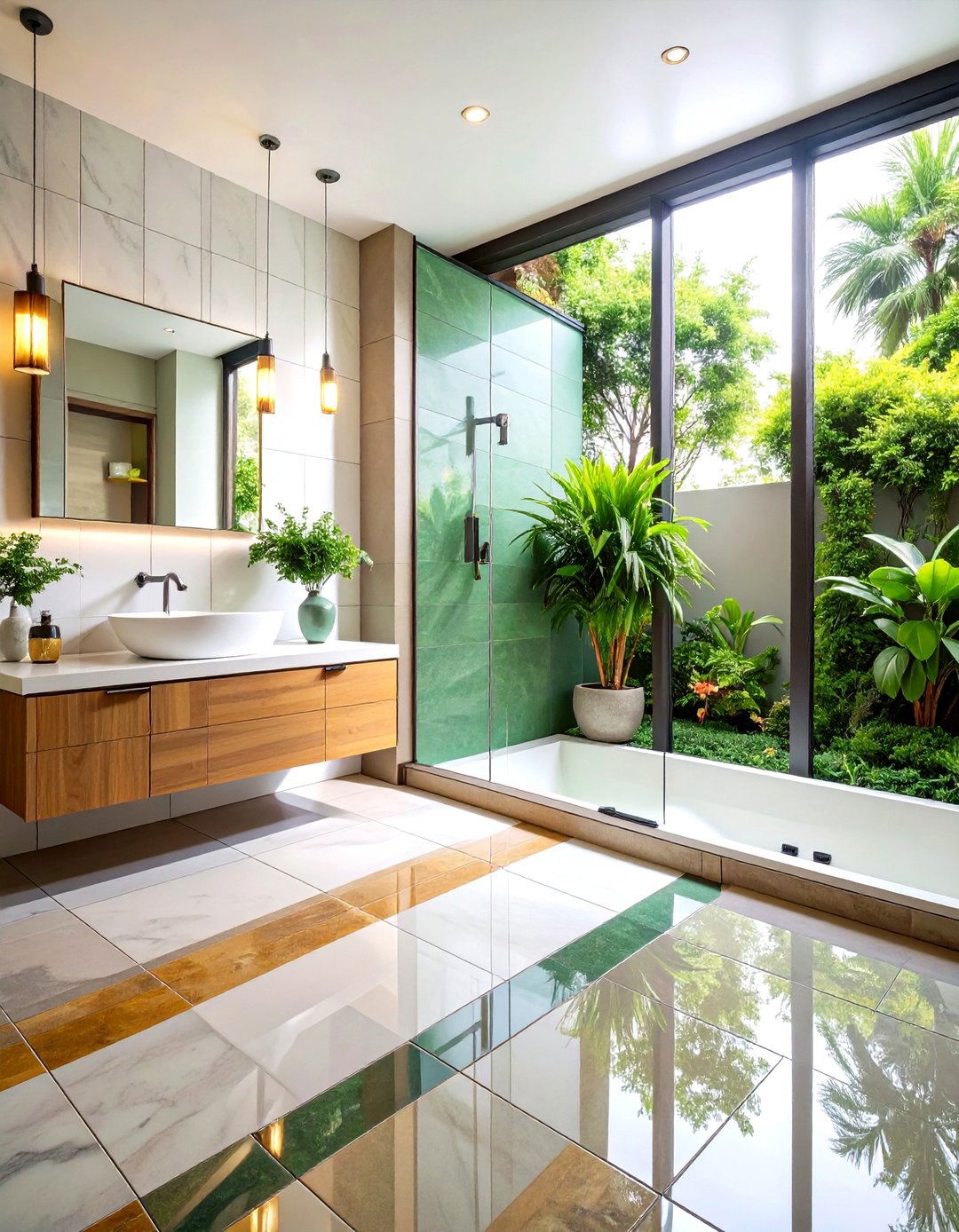
Classic ceramic and porcelain tiles remain top choices for bathroom floors due to their inherent water resistance and longevity. Porcelain, being denser and less porous than ceramic, is especially suited to high-moisture environments but may require sealing if unglazed. Tiles come in myriad sizes—from small mosaics that add texture to large-format slabs that minimize grout lines—and an extensive palette of colors and finishes. This versatility allows you to create everything from minimalist monochrome floors to intricate patterned layouts. Their hard, durable surfaces withstand heavy foot traffic, and routine cleaning keeps them hygienic and stain-free.
3. Natural Stone
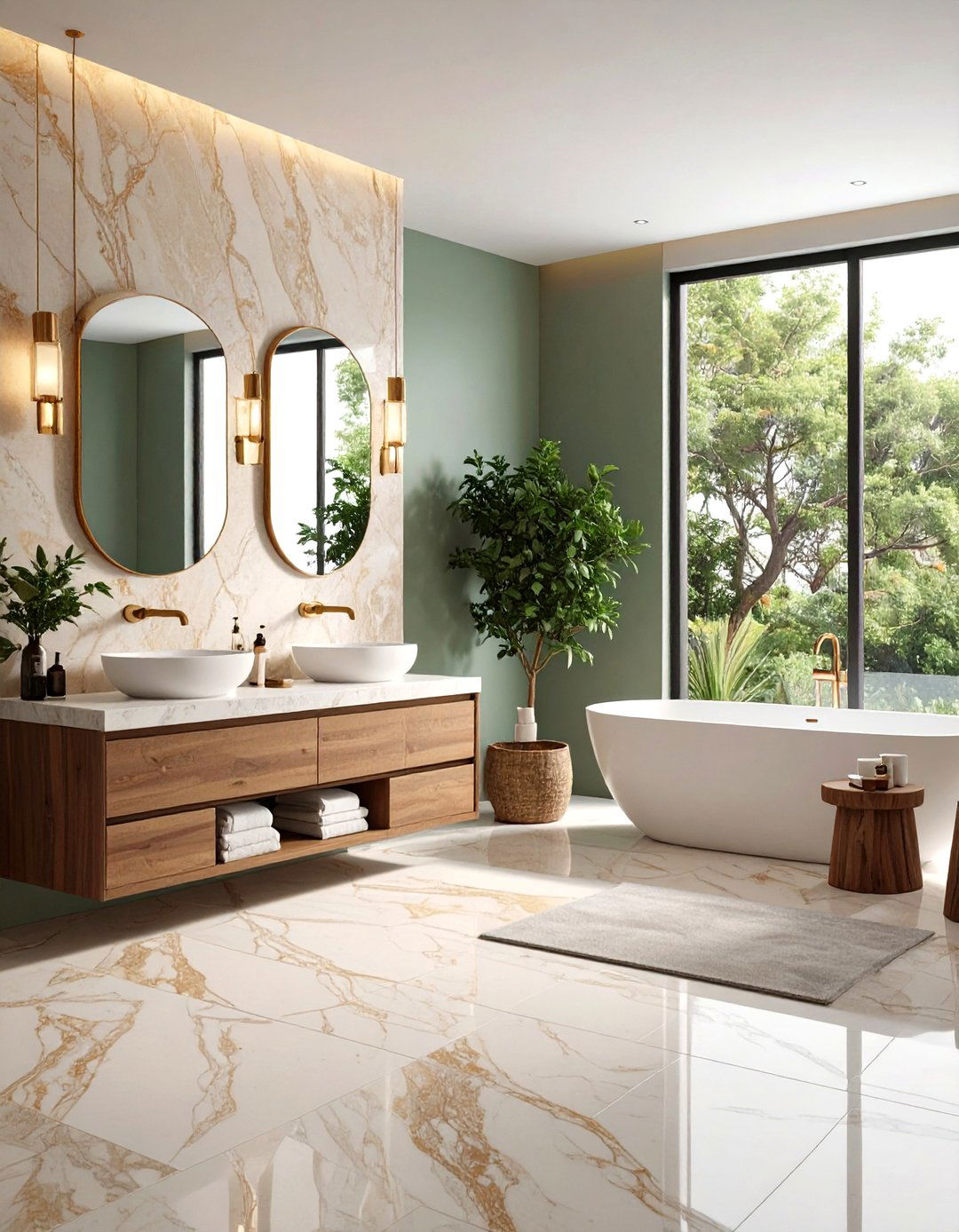
Natural stone—marble, slate, travertine, or limestone—imbues a bathroom with timeless luxury and organic variation. Each tile bears unique veining and coloration, creating a bespoke look. However, stone’s porosity necessitates regular sealing to prevent water absorption and staining, and professional installation is recommended to ensure proper subfloor preparation and grout. Despite these considerations, stone’s robust durability and classic appeal often justify the investment for homeowners seeking an upscale, spa-like retreat in a small footprint.
4. Engineered Wood

For those desiring the warmth of wood, engineered wood offers dimensional stability and moisture resistance unattainable by traditional hardwood. Composed of multiple plywood layers topped with a real wood veneer, engineered planks withstand humidity fluctuations while delivering the authentic grain and texture of hardwood. While not fully waterproof, proper sealing and prompt spill cleanup allow its use in well-ventilated bathrooms. Its plank format can stretch visual space, and lighter wood tones further enhance brightness in compact rooms.
5. Hexagon Tiles
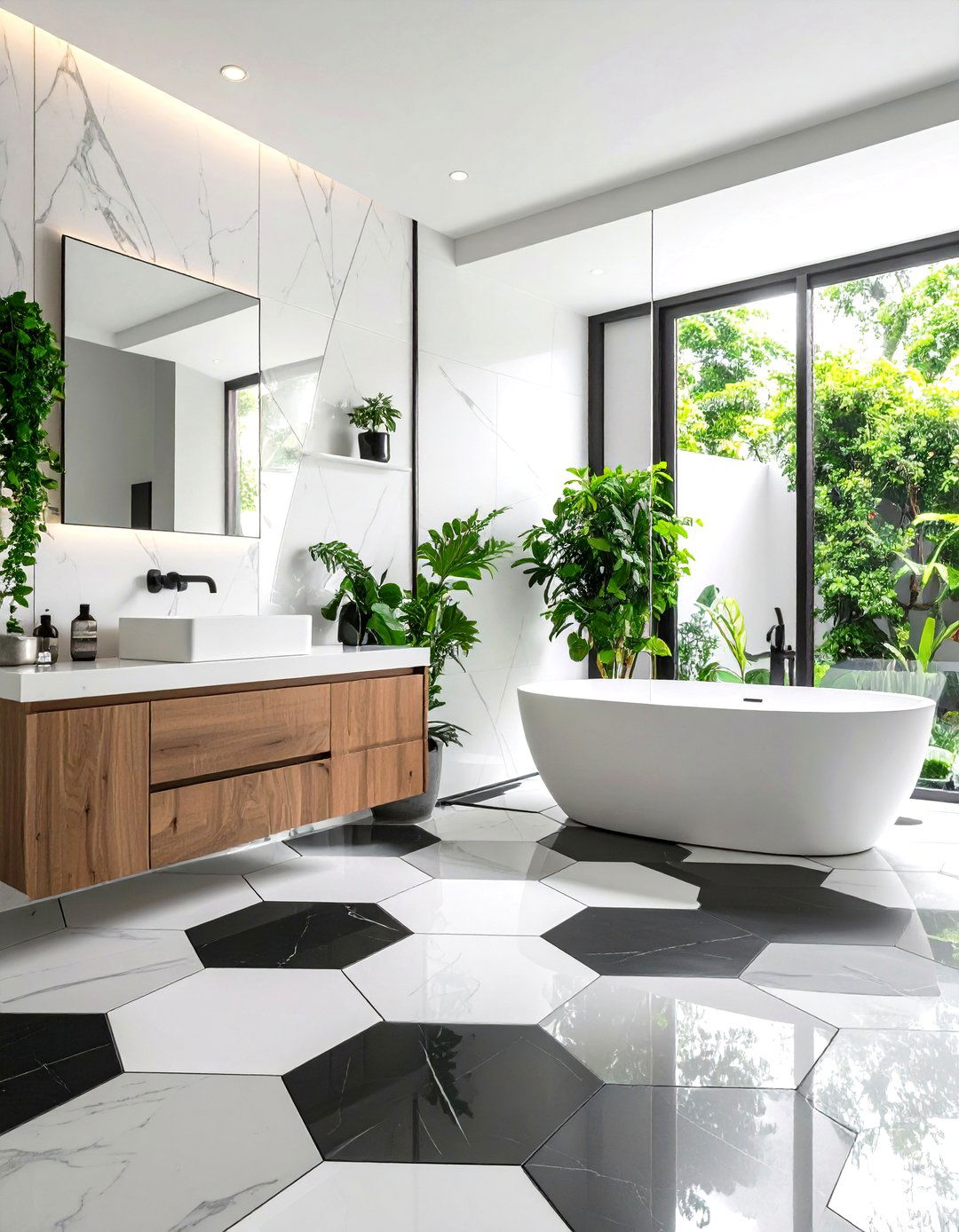
Hexagonal floor tiles introduce geometric flair and visual interest, from classic black-and-white patterns to modern glass or marble finishes. Their uniform honeycomb layout draws the eye across the floor, creating dynamic movement in a small area. Varied sizes—from tiny mosaics that offer slip resistance to large-format hexes that minimize grout—allow customization to your space. Available in porcelain, ceramic, and natural stone, hexagon tiles suit both vintage-inspired and contemporary designs, making them a versatile choice for compact bathrooms.
6. Small Mosaic Tiles

Mosaic tiles—tiny squares or tesserae—excel in small bathrooms by providing traction underfoot and a visually textured surface. Their adaptability allows for curved installations, like rounded shower pans or waterfall transitions, without awkward cuts. Narrow grout lines also make the space feel more continuous and spacious, while glass mosaics can reflect light to brighten dark corners. Mosaic sheets often come pre-mounted on mesh backings, simplifying installation in confined areas.
7. Terrazzo Flooring
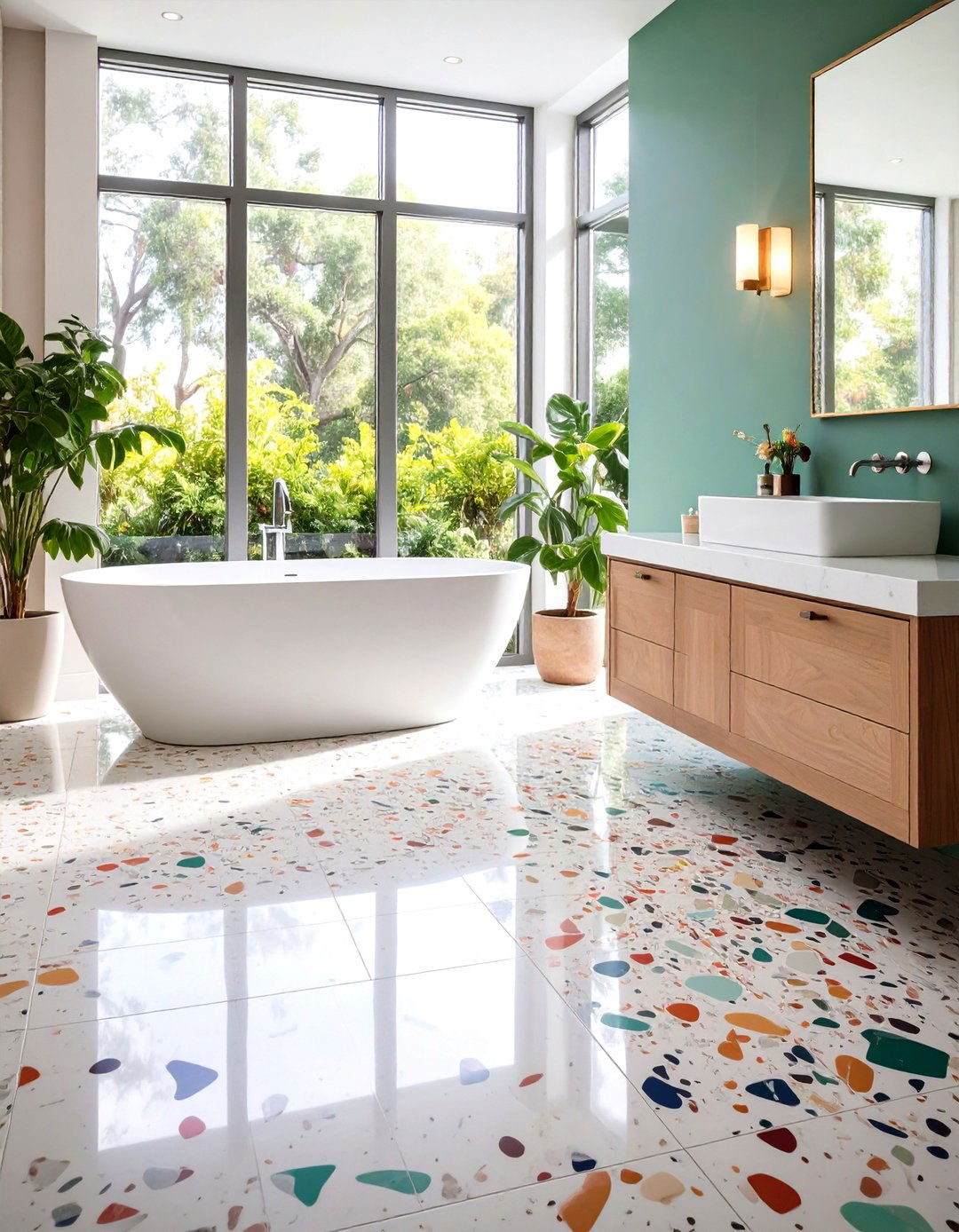
Terrazzo—a composite of marble chips set into cement or resin—creates a durable, seamless floor ideal for small bathrooms. Its speckled surface hides imperfections and dirt, while polished finishes reflect light to expand visual space. Available in customized chip sizes and color blends, terrazzo can complement both neutral and colorful palettes. Proper sealing prevents staining and moisture penetration, and its monolithic installation minimizes grout lines, which reduces maintenance and enhances the feeling of expansiveness.
8. Large-Format Tiles
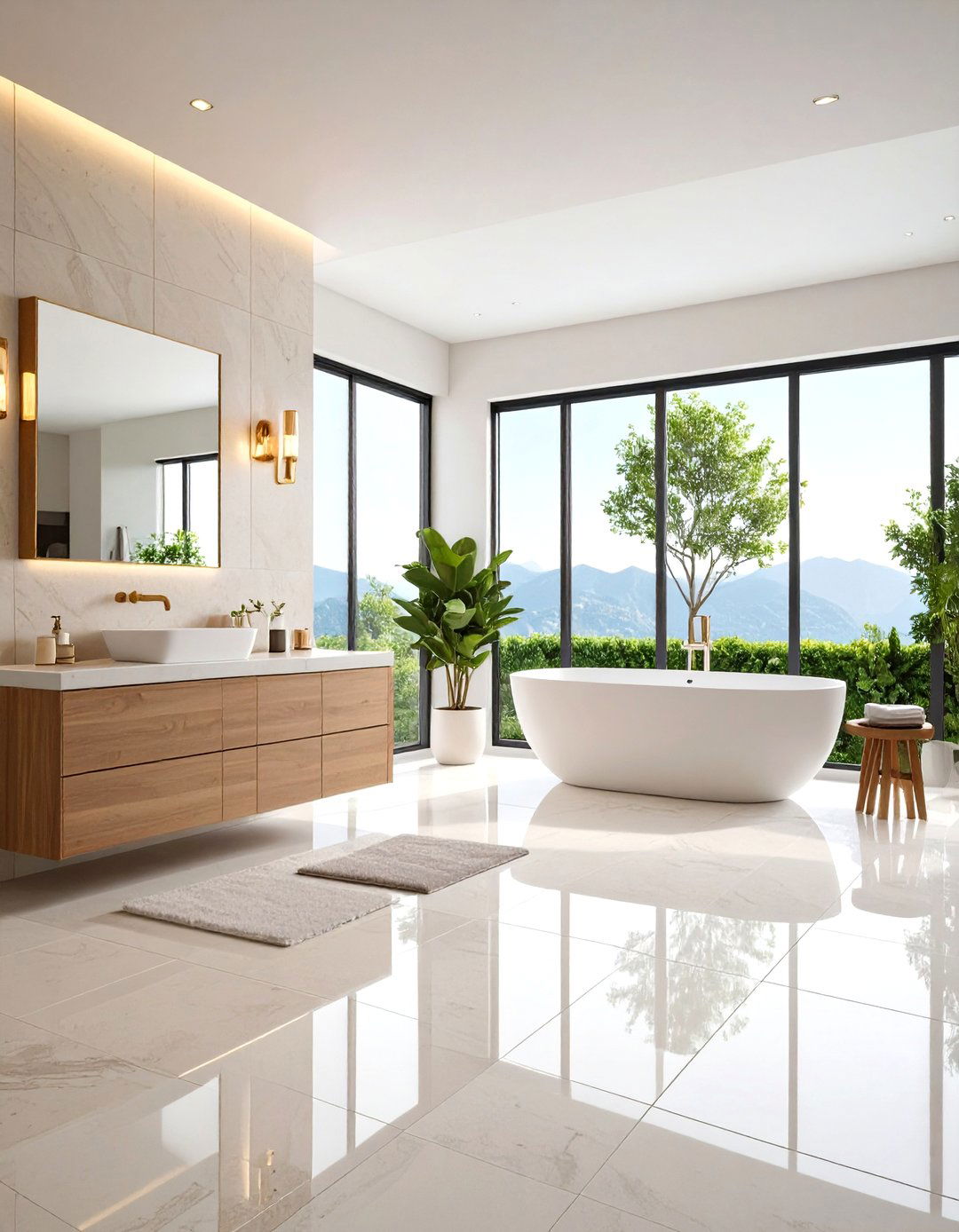
Oversized tiles—often 12×24 inches or larger—reduce grout lines, creating a more cohesive, airy appearance in a cramped bathroom. Fewer seams mean a near-uninterrupted surface, which tricks the eye into perceiving a bigger floor area. Polished large-format porcelain can reflect fixtures and lighting, further brightening the space, while matte finishes provide warmth and slip resistance. When laid on the diagonal, they also introduce subtle geometric interest without busy patterns.
9. Herringbone Pattern
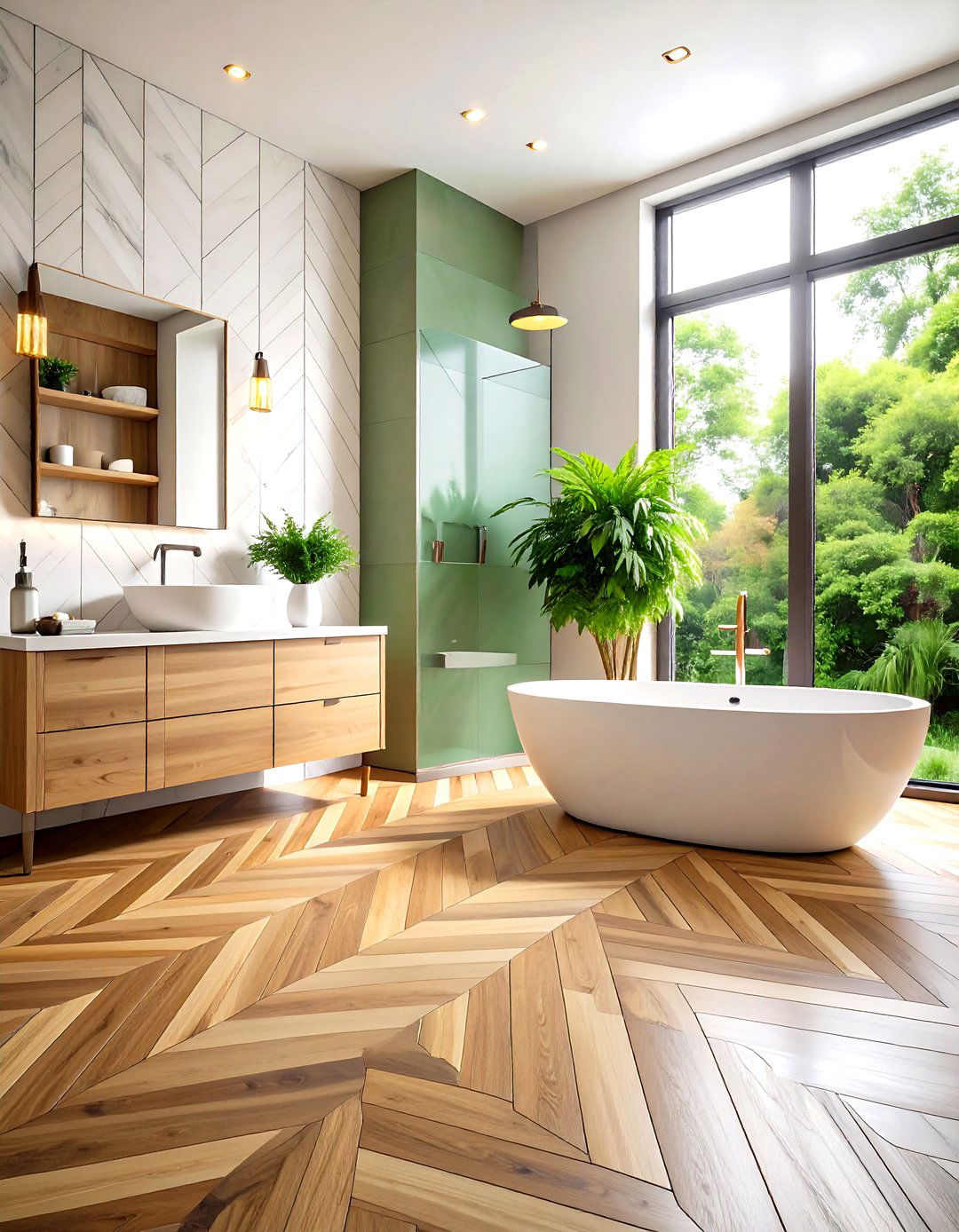
A classic herringbone layout—rectangular planks or tiles arranged in a zigzag—adds dynamic movement to a small floor without overwhelming it. The angled pattern draws the eye lengthwise, visually stretching the room. Herringbone works equally well with wood-look planks, marble tiles, or porcelain rectangles. Despite its increased installation time and material waste, the resulting elegance and perceived expansiveness often make it worthwhile in high-impact areas like bathrooms.
10. Checkerboard Pattern
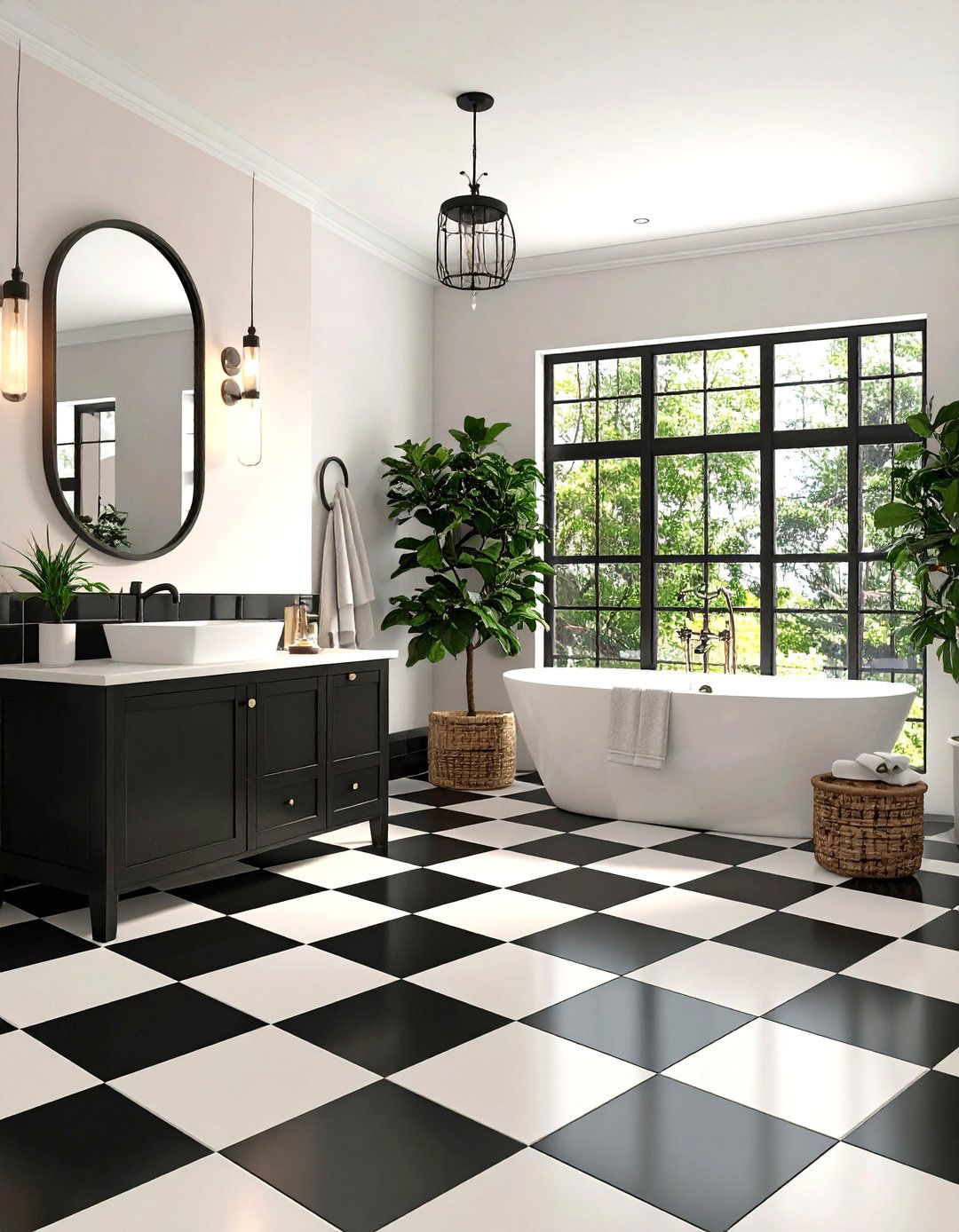
Timeless black-and-white checkerboard tile instantly evokes old-world charm and visual contrast. In a small bathroom, a checkerboard floor anchors the space and complements both minimalist and ornate decors. Opting for smaller tiles reinforces texture and traction, while larger squares yield a bolder, more modern statement. Consider alternating grout colors—white grout with black tiles and vice versa—to emphasize the pattern further.
11. Diagonal Tile Layout
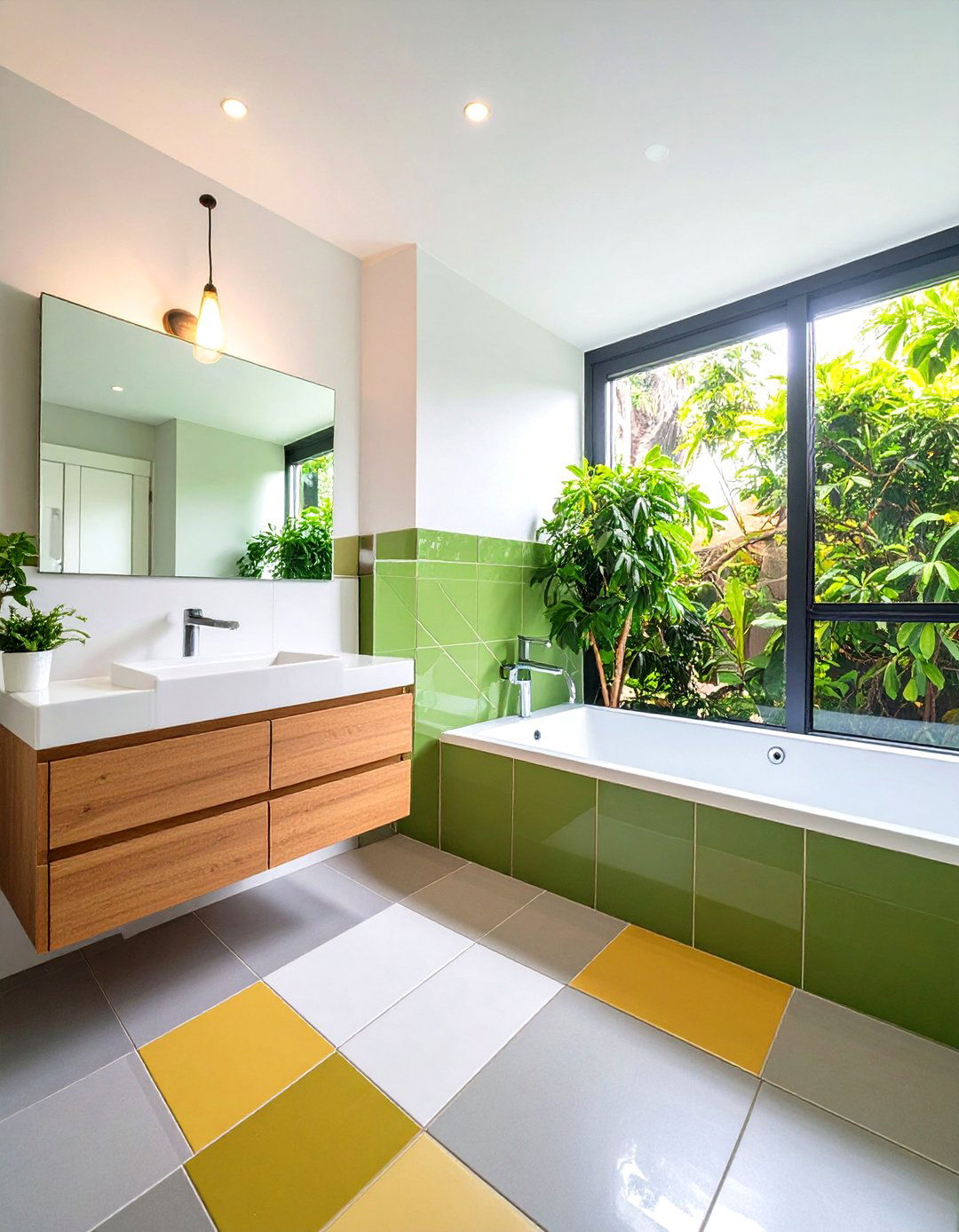
Laying square tiles at a 45° angle to the walls creates a diagonal pattern that tricks the eye into seeing a wider floor area. This method works with any tile type—porcelain, ceramic, or natural stone—and adds visual dynamism without requiring unique materials. While cutting along perimeter walls increases installation complexity, the payoff is a more expansive-looking layout that suits small bathrooms seeking subtle flair.
12. Encaustic Cement Tiles
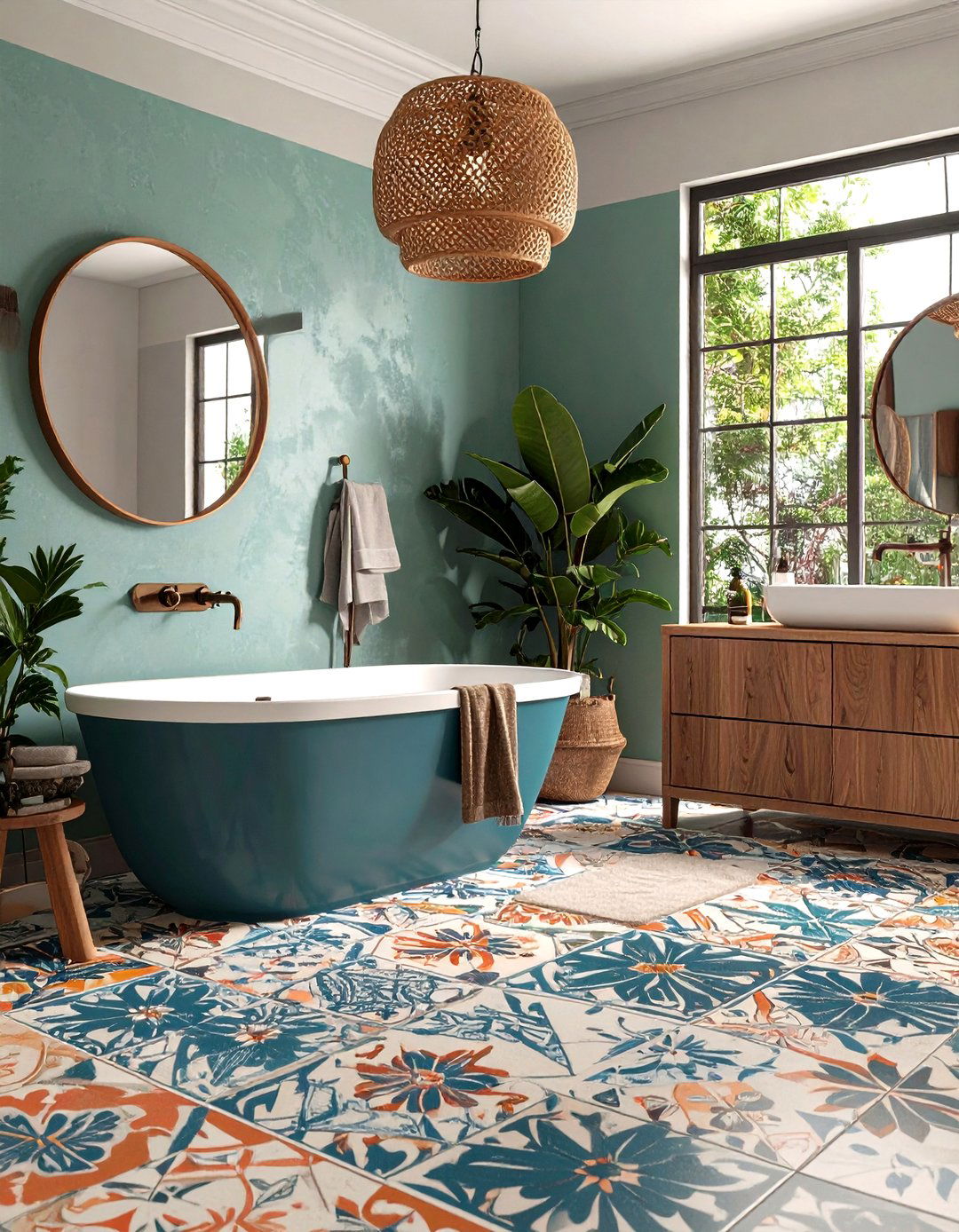
Encaustic cement tiles feature bold, enduring patterns created by inlaid pigments rather than surface glazes. Their artisanal, handcrafted look lends character to compact bathrooms and can define the floor as a focal “rug” under fixtures. Although cement tiles require sealing and occasional maintenance to protect against moisture and staining, their vivid geometric or floral motifs can elevate even the smallest powder room into a memorable design statement.
13. Wood-Look Porcelain Tiles
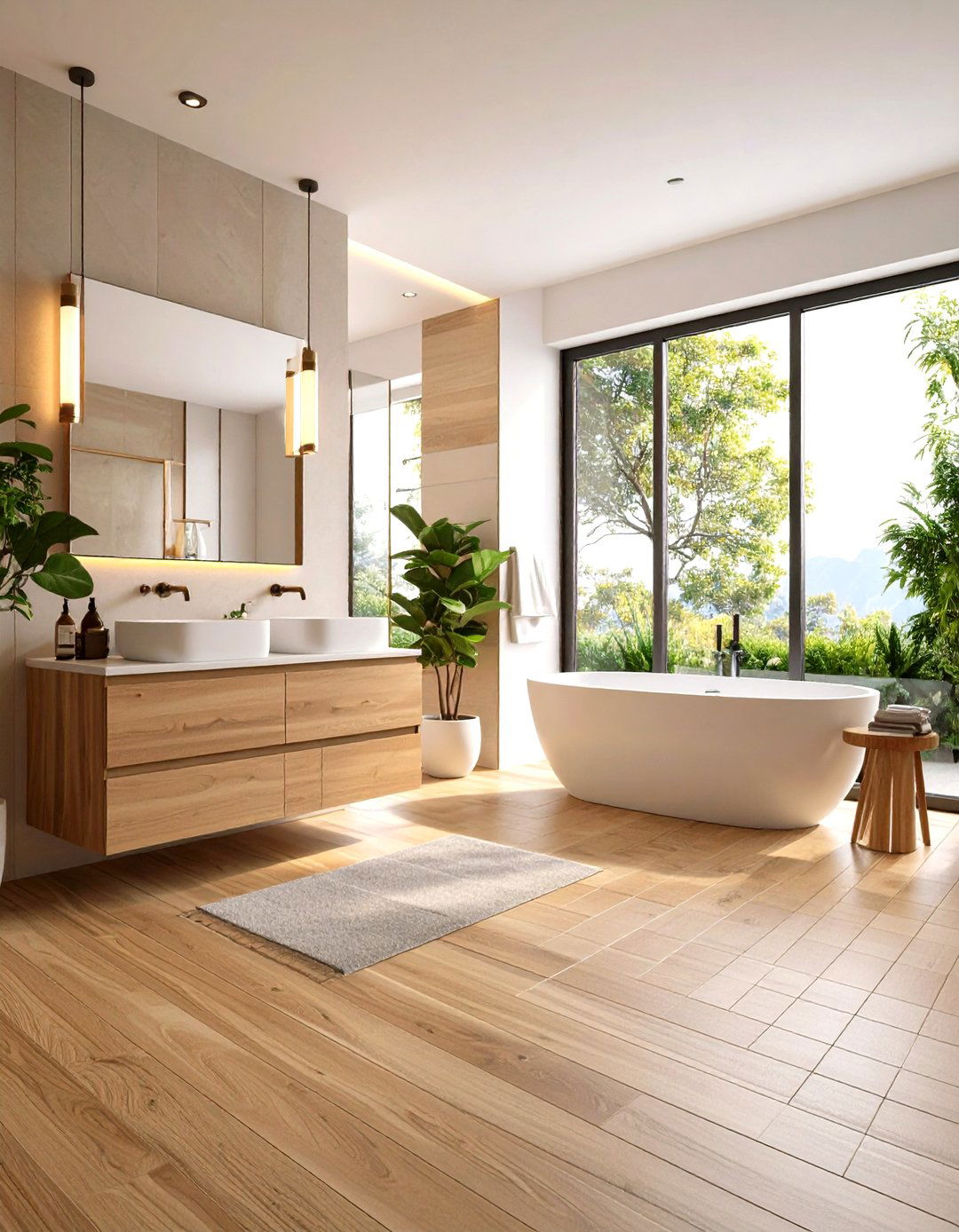
Porcelain planks that mimic natural wood grain combine the aesthetic warmth of timber with porcelain’s water resistance. In small bathrooms, the linear wood pattern directs sightlines lengthwise, elongating the space. Porcelain’s durability and ease of maintenance make it preferable to real wood in wet environments, and modern rectified edges ensure tight grout joints for a more seamless appearance.
14. Pebble Flooring

Smooth river pebbles set in mesh-backed sheets create an organic, tactile floor surface that doubles as a gentle foot massage. Ideal for shower floors or entire bathroom floors, pebble tiles provide excellent slip resistance. Proper grouting and sealing are crucial to prevent water infiltration, and their irregular surface should be cautiously used in areas frequented by barefoot elderly users. The natural color variations also camouflage water spots and dirt.
15. Heated Flooring

Radiant floor heating systems installed beneath tile or stone add luxurious warmth to small bathrooms, ensuring chilly morning showers are more comfortable. Electric mats or hydronic tubing can be retrofitted under new floors, though planning for insulation and proper subflooring is essential. Beyond comfort, radiant heat can help dry tile grout and reduce humidity, potentially extending the life of moisture-sensitive materials. Enthusiasts often cite heated floors as one of their best upgrades.
16. Bold Grout Colors
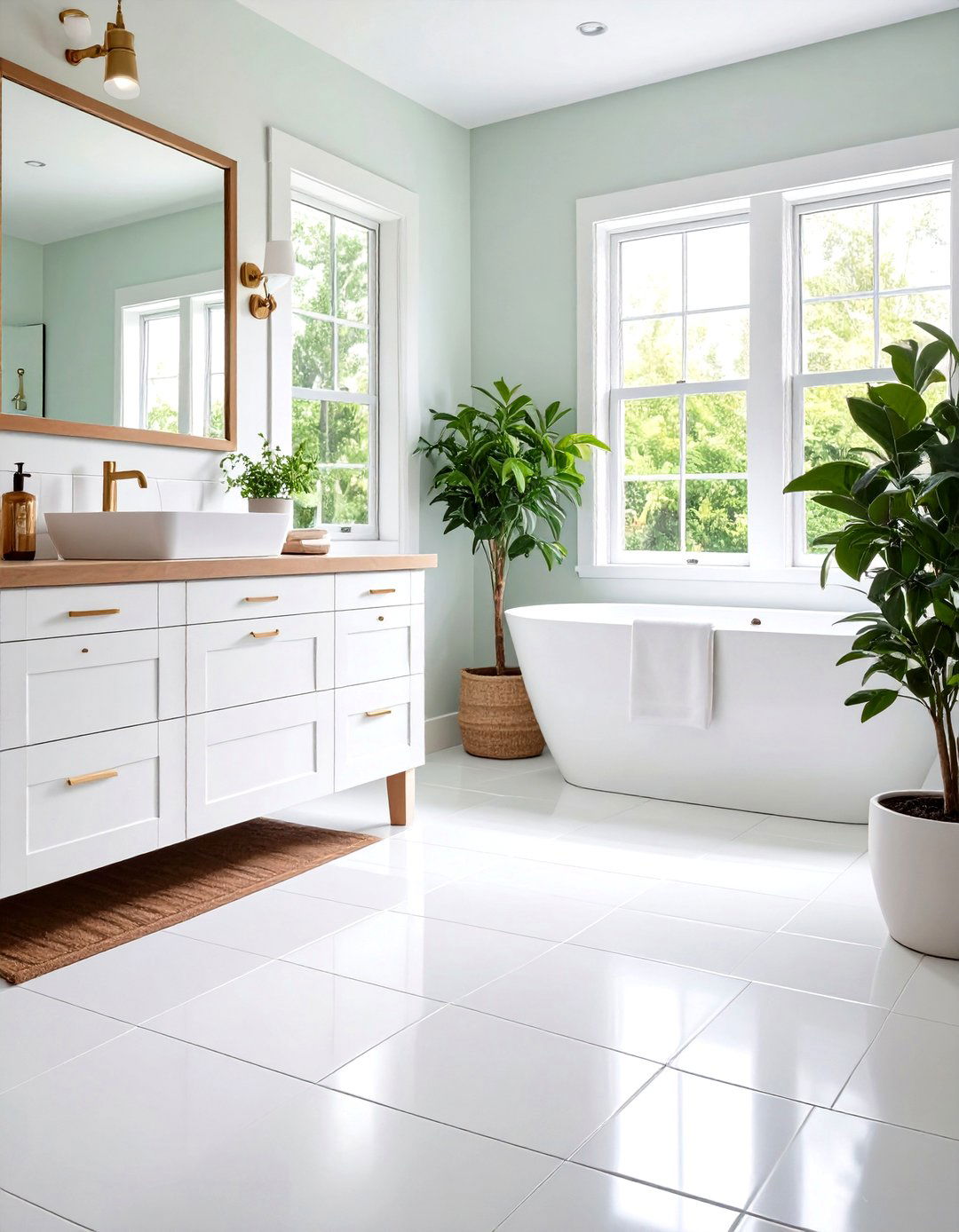
Using grout in contrasting hues—charcoal between white tiles, for instance—turns every joint into a design element. In small bathrooms, a bold grout can delineate tile shapes and introduce graphic energy. Colored grout also hides imperfections in grout lines and resists visible staining in high-traffic areas. For a subtler effect, consider mid-tone grouts that complement both tile color and surrounding décor.
17. Patterned Vinyl Flooring
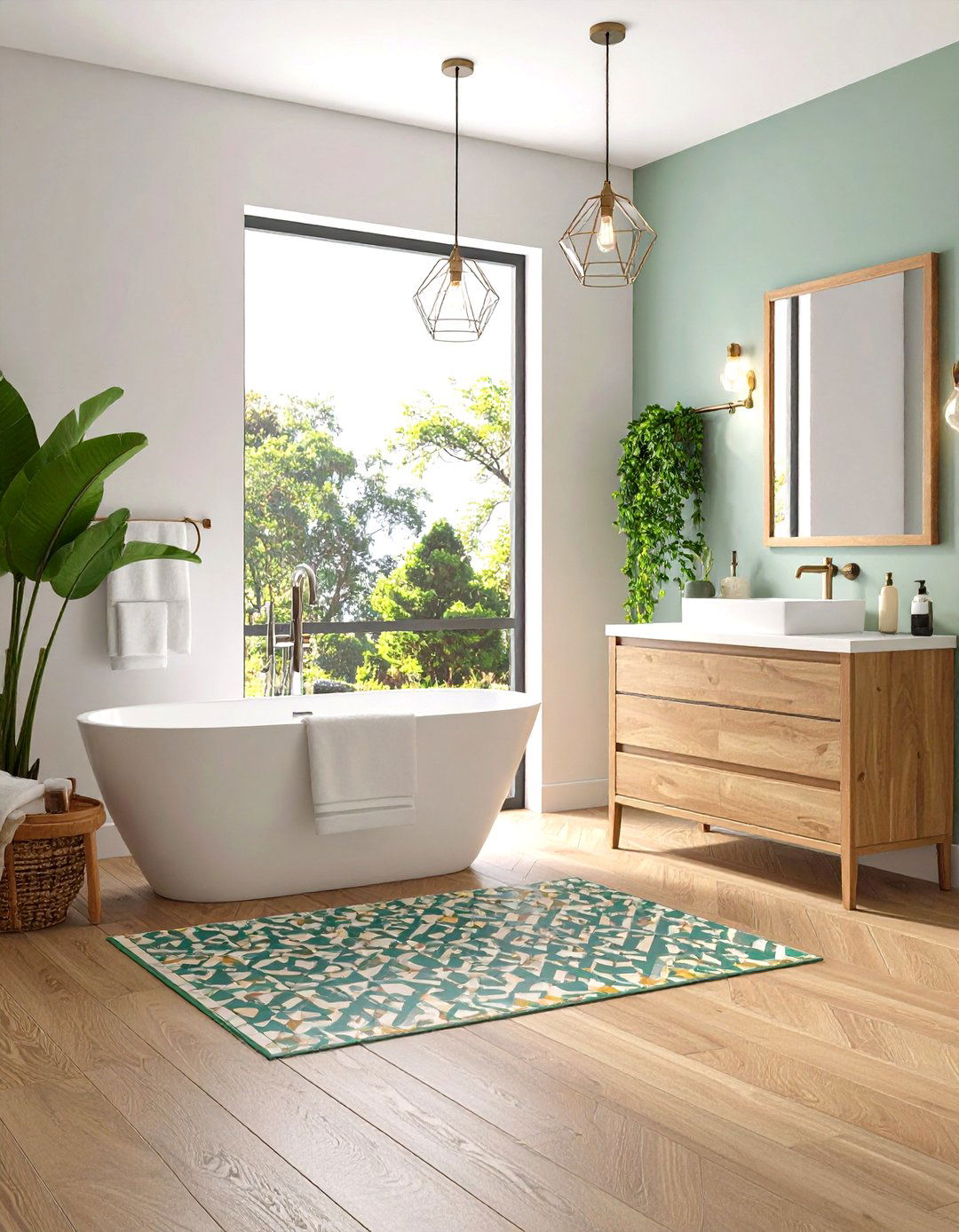
Budget-friendly patterned vinyl or luxury vinyl planks offer quick installation, waterproof performance, and a variety of vintage or modern motifs. From Art Deco geometric prints to faux-encaustic designs, vinyl flooring can achieve high-end looks at a fraction of the cost and effort. Its cushioned underfoot feel and noise-dampening qualities are additional bonuses in compact, echo-prone bathrooms.
18. Bamboo Flooring
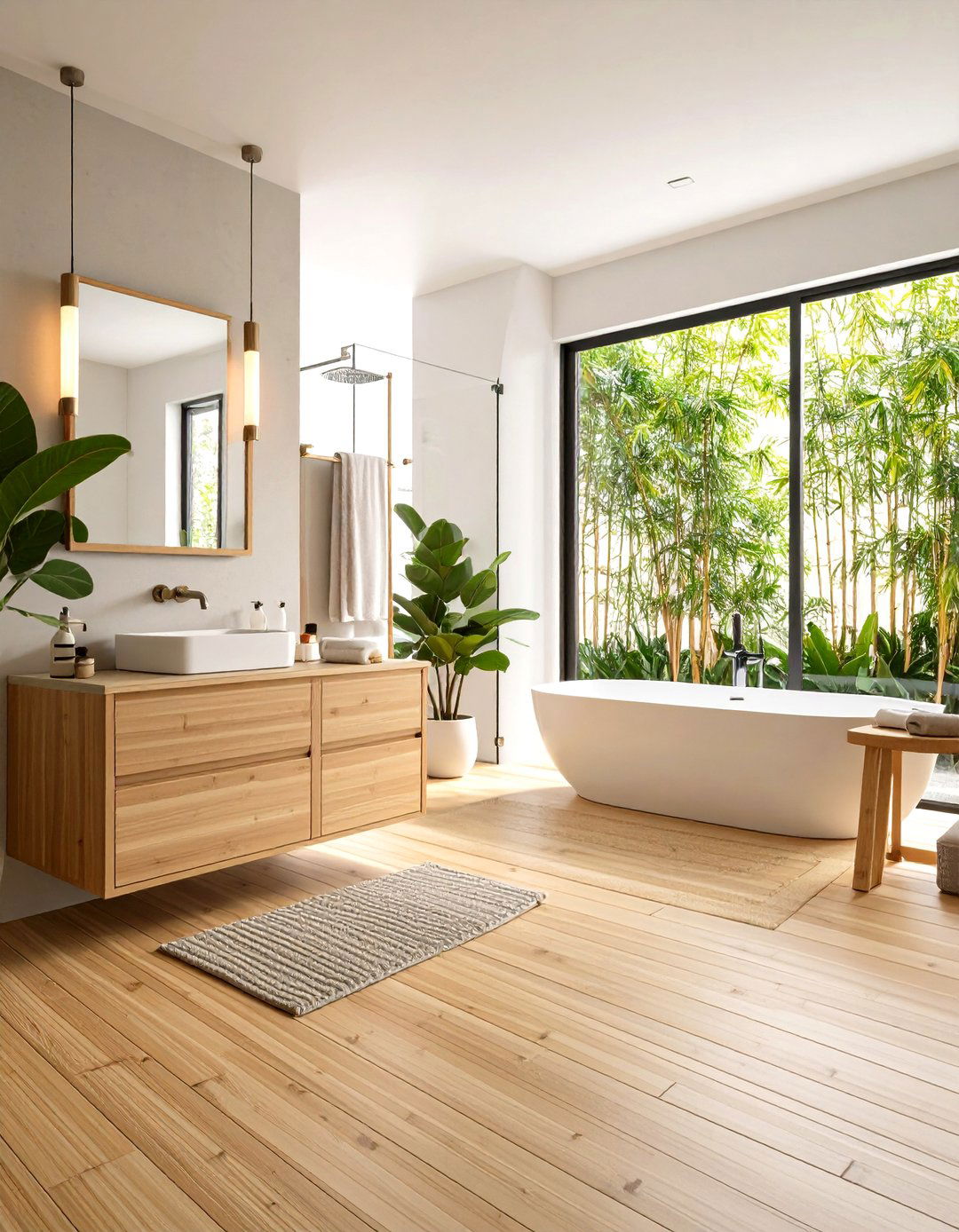
Strand-woven bamboo planks deliver sustainability and eco-friendliness, as bamboo regenerates rapidly. While more moisture-resistant than traditional hardwood, bamboo still requires careful sealing and maintenance in bathrooms. Its linear grain and light tones brighten small spaces, and tongue-and-groove installation minimizes gaps. Bamboo’s hardness rating makes it surprisingly durable under bathroom fixtures and foot traffic.
19. Microcement Flooring
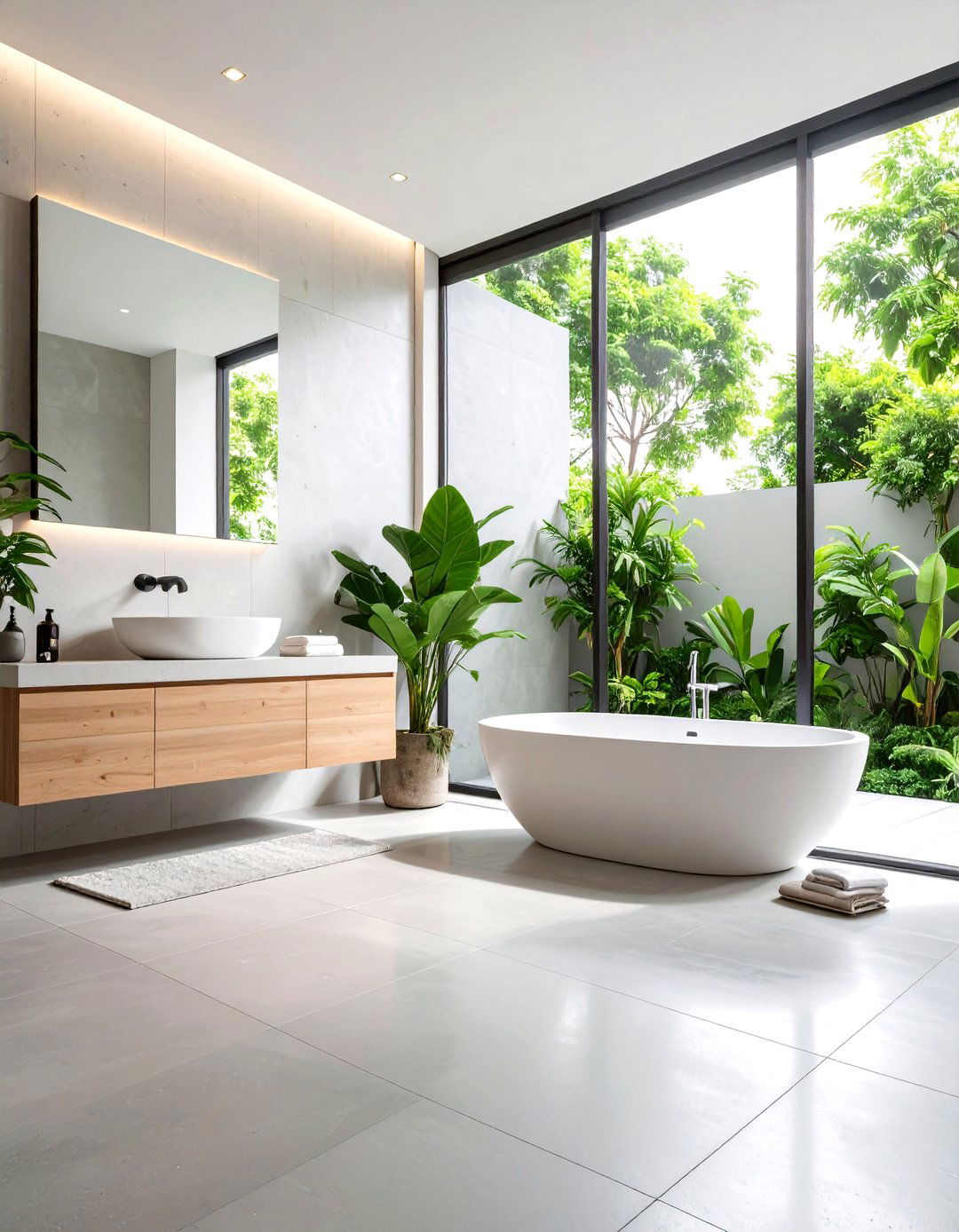
A seamless, thin overlay of microcement creates a sleek, monolithic floor with virtually invisible joints—ideal for achieving a minimalist, spa-like aesthetic. Microcement’s waterproof formulation adheres to existing substrates, reducing demolition waste. Its smooth surface is easy to clean, and color options span from soft neutrals to dramatic dark tones. Professional application ensures durability and proper waterproofing, making it a contemporary choice for small bathrooms seeking a bespoke look.
20. Cork Flooring
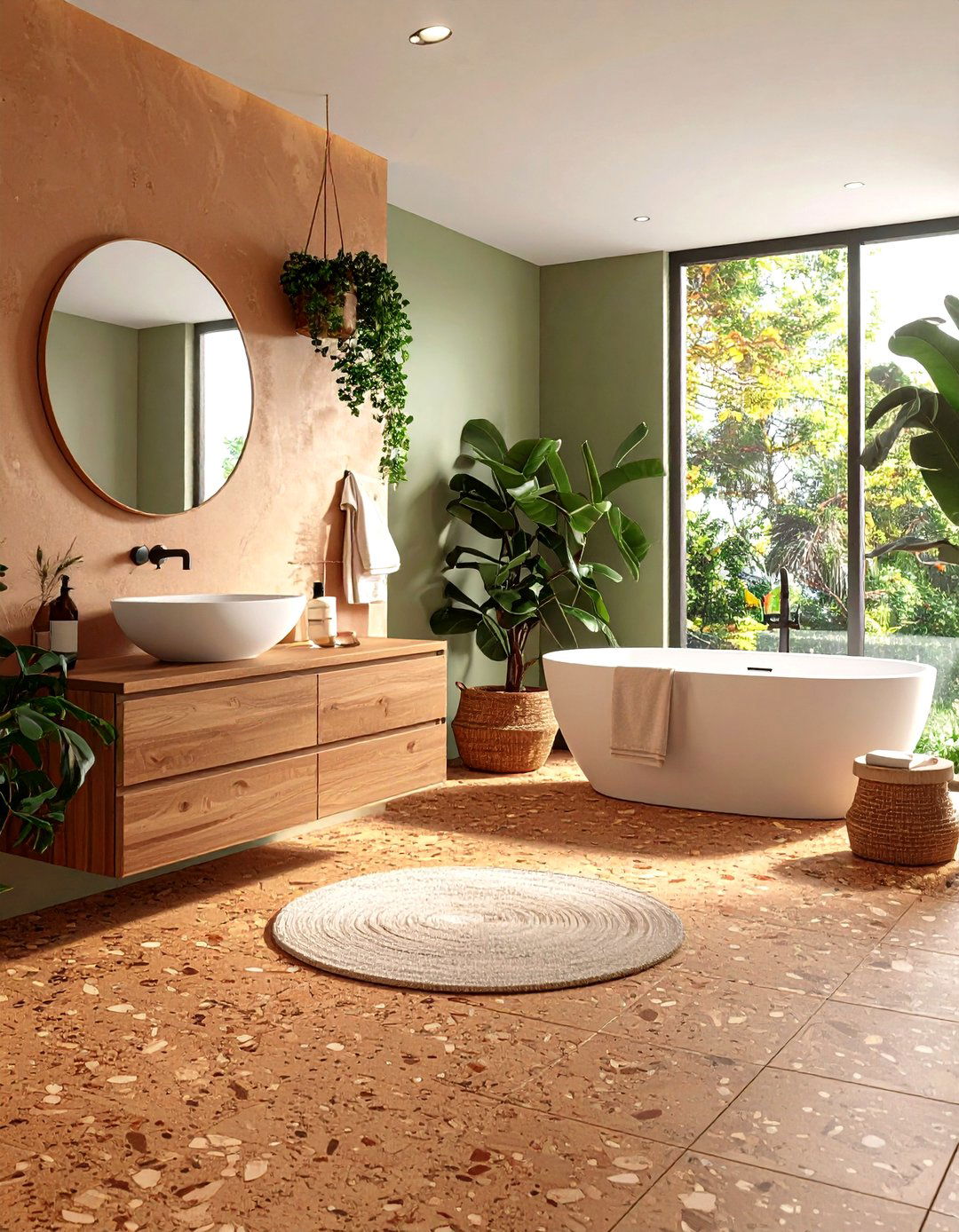
Cork tiles offer a warm, cushiony underfoot feel and natural thermal insulation, making them comfortable in a small bathroom. Though inherently water-resistant, cork must be sealed properly to prevent moisture ingress and potential swelling. Its acoustic dampening reduces echo in compact spaces, and its subtle flecked appearance adds organic texture. Cork is also eco-friendly, harvested without harming trees and renewable when responsibly sourced.
Conclusion:
From traditional ceramic tiles to innovative microcement and eco-friendly bamboo, these 20 flooring ideas demonstrate that size needn’t limit style in small bathrooms. Key considerations include moisture resistance, slip safety, ease of maintenance, and visual strategies—like large-format tiles or diagonal layouts—to make the space feel larger. Whether you prefer budget-conscious solutions like luxury vinyl, the timeless elegance of encaustic cement, or the organic warmth of cork, the ideal floor awaits to anchor your compact bathroom in both function and design.


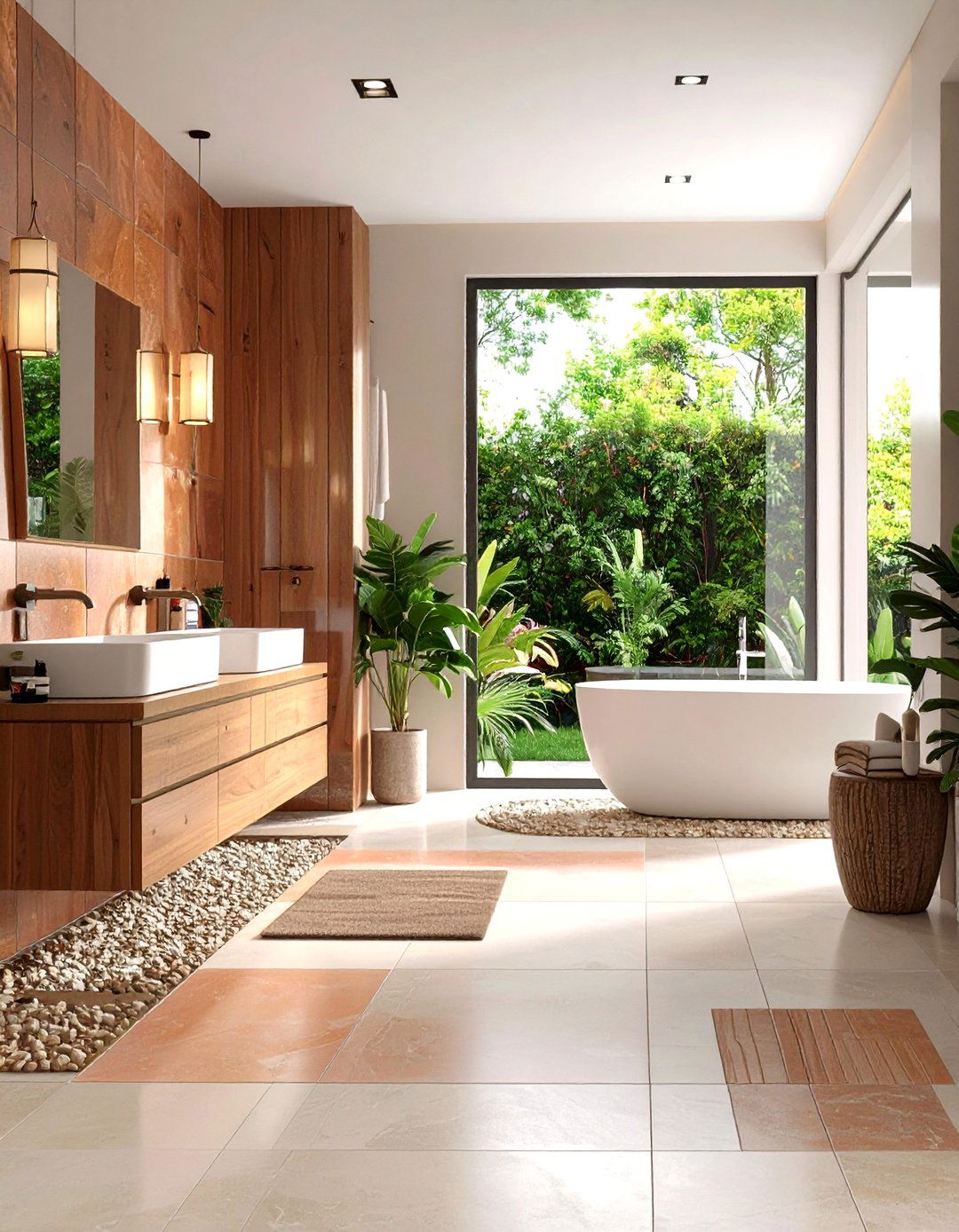
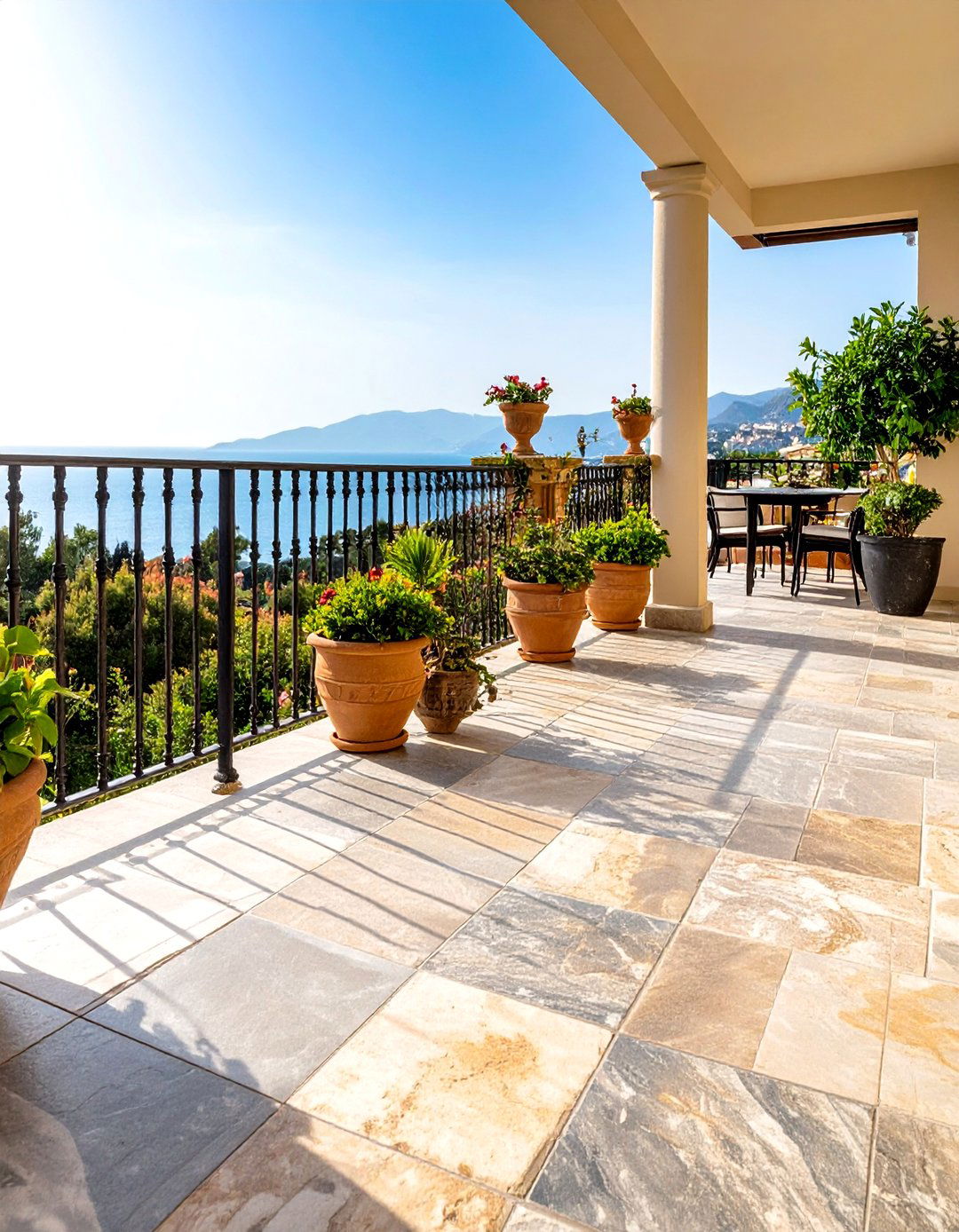

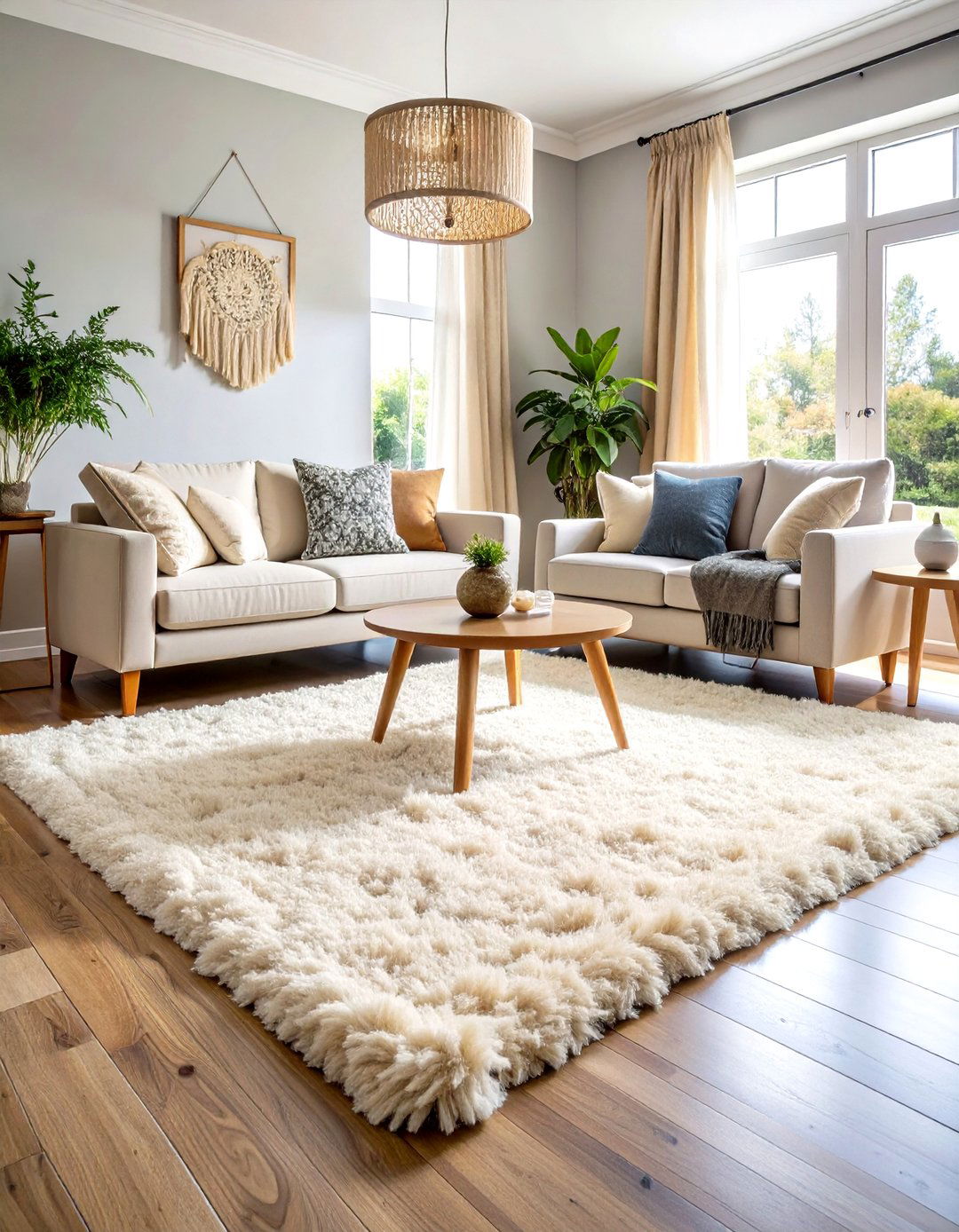
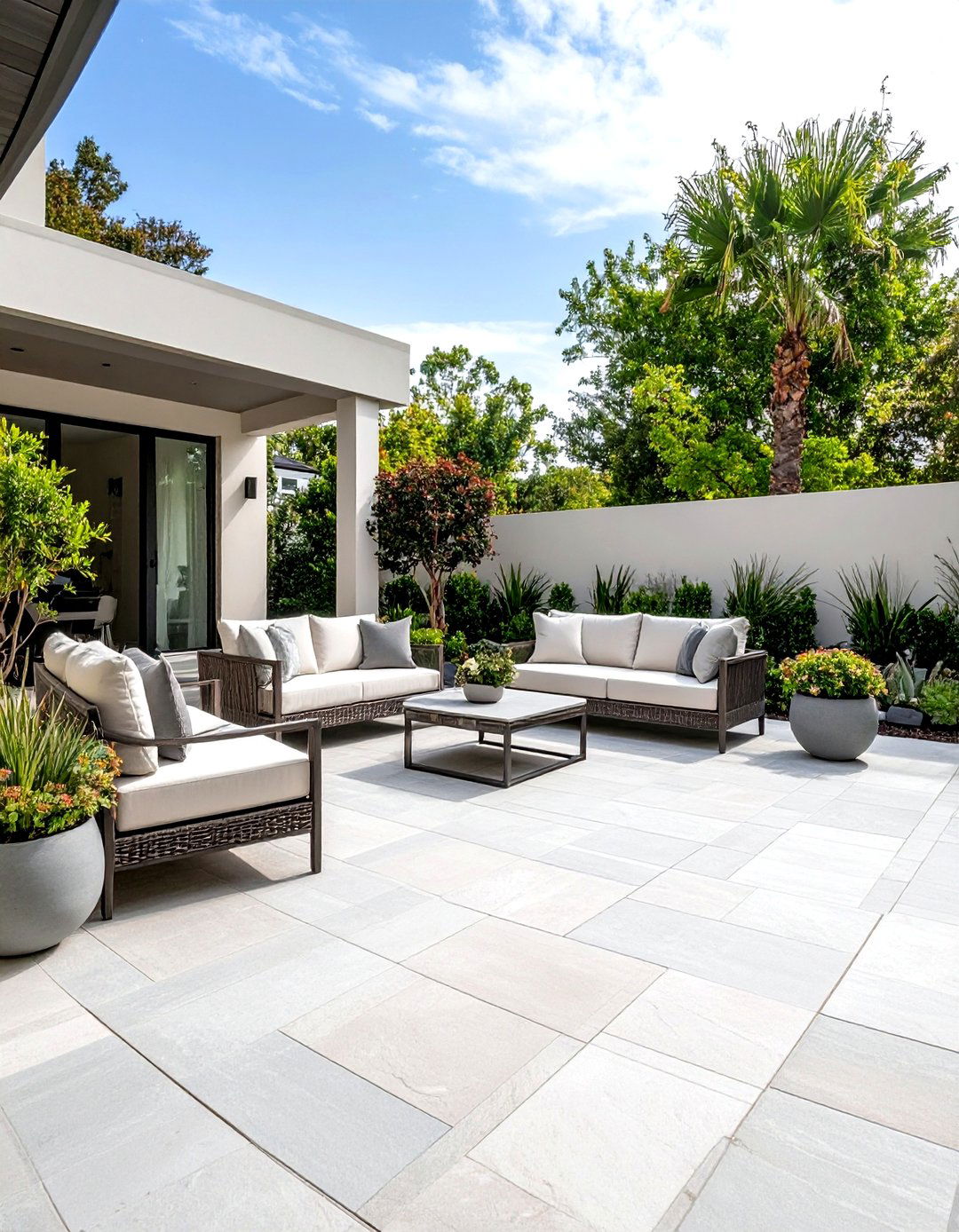


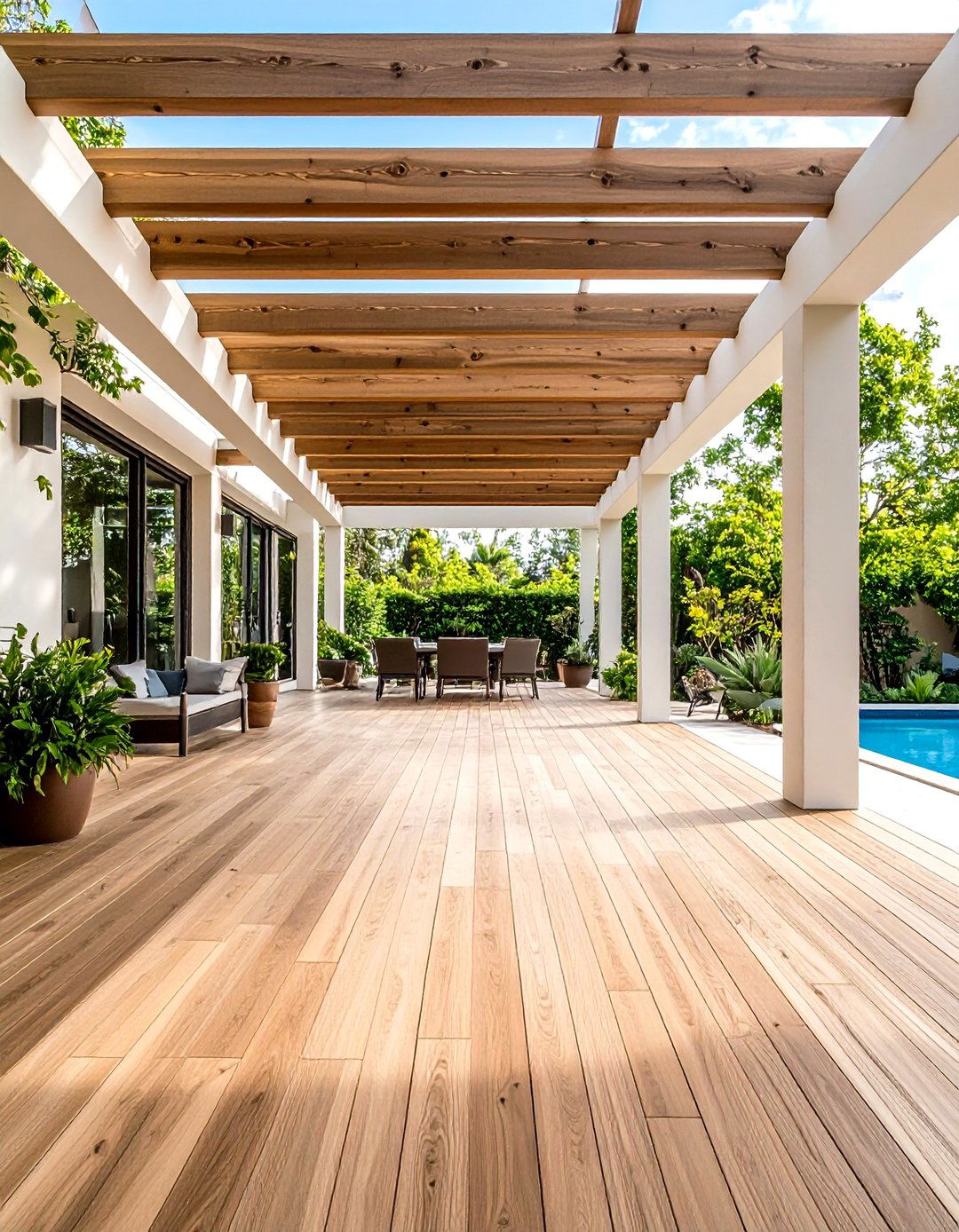
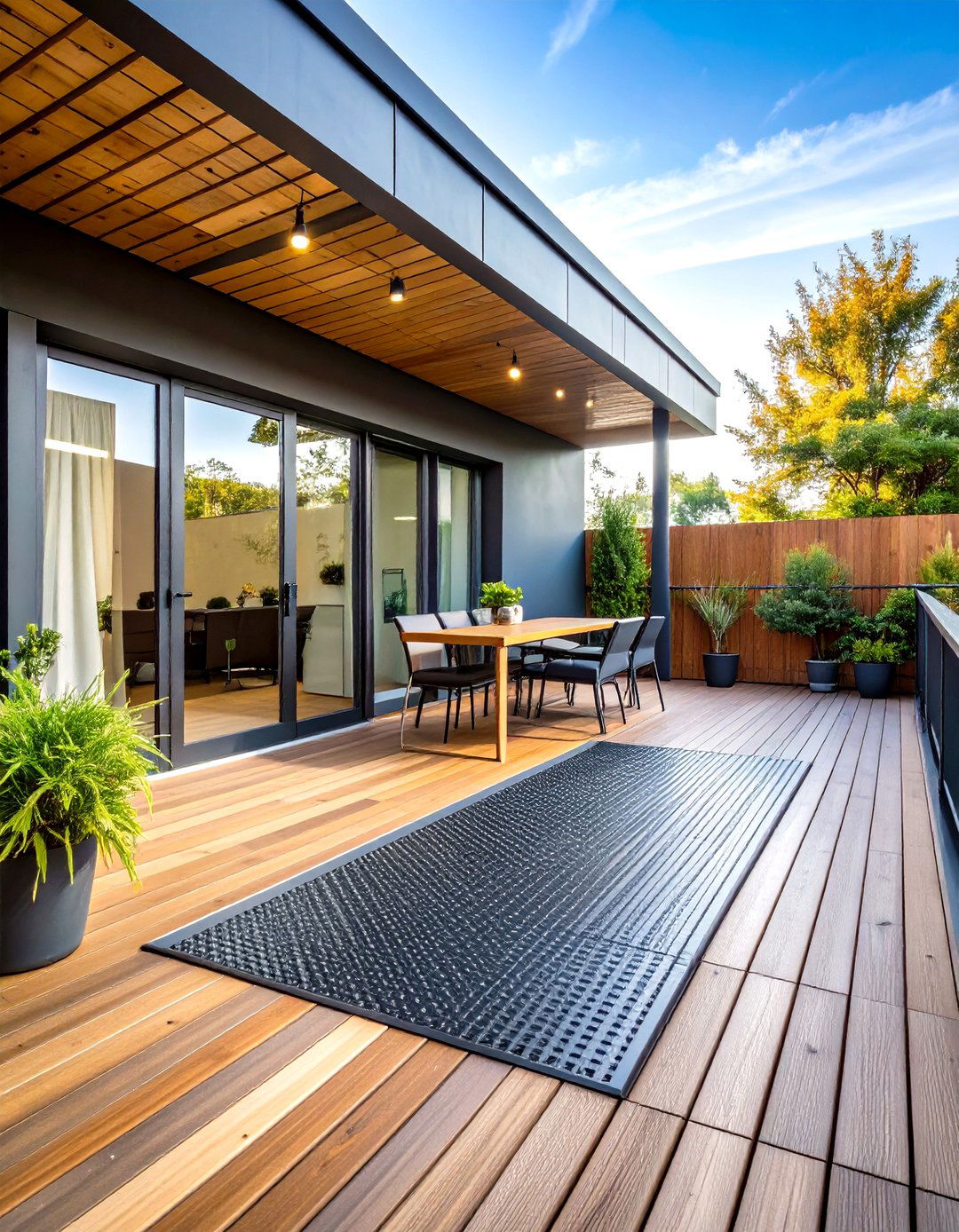

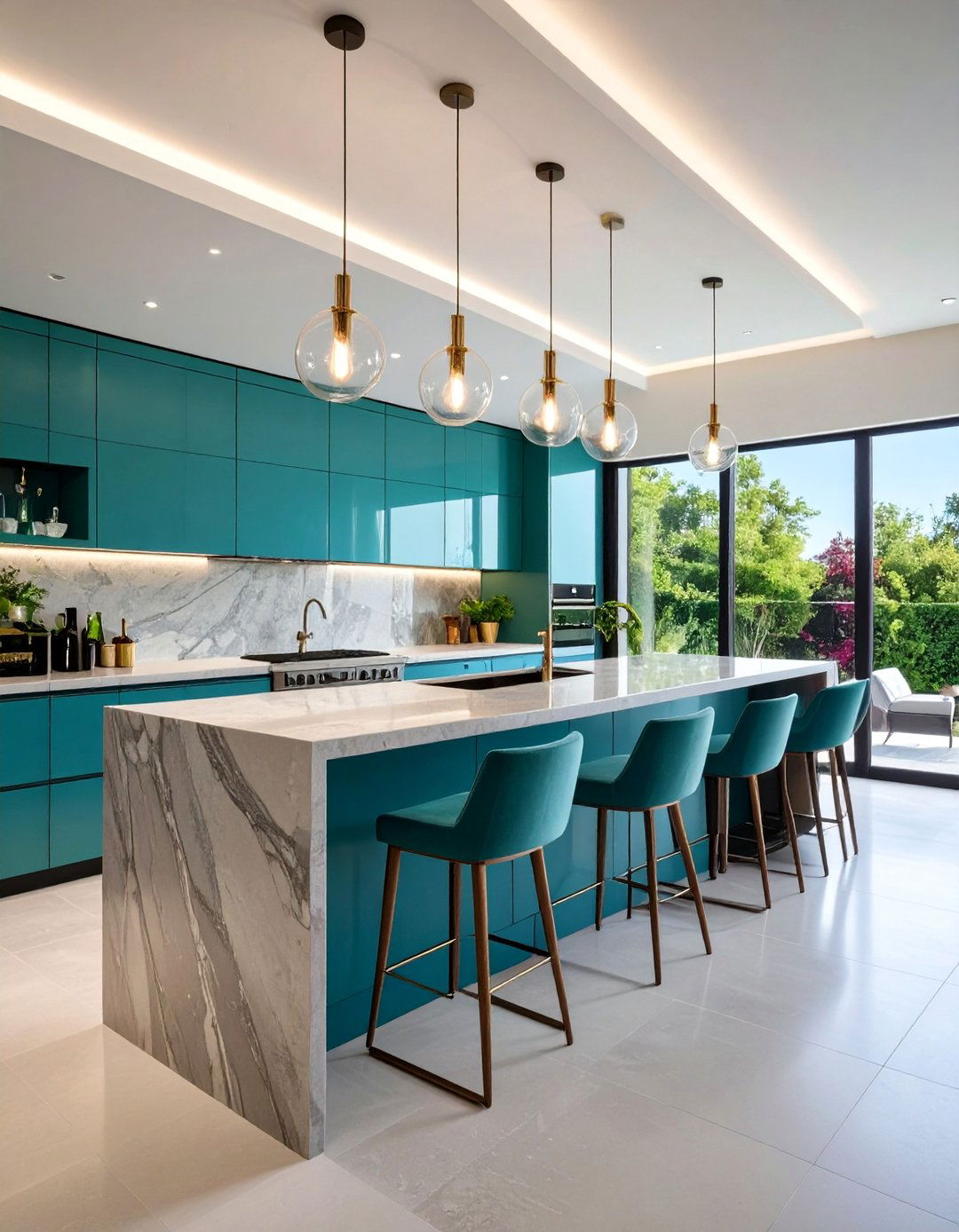
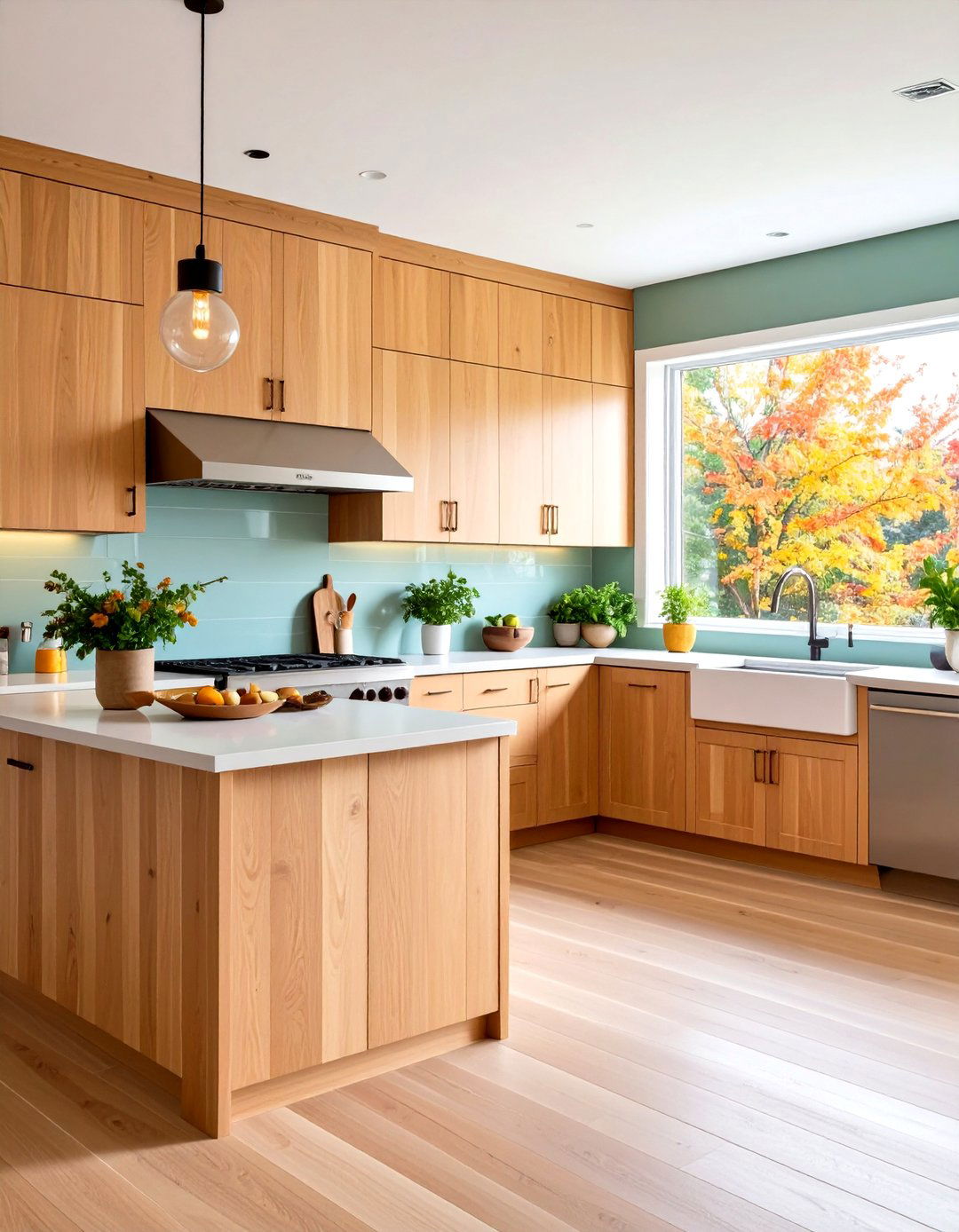

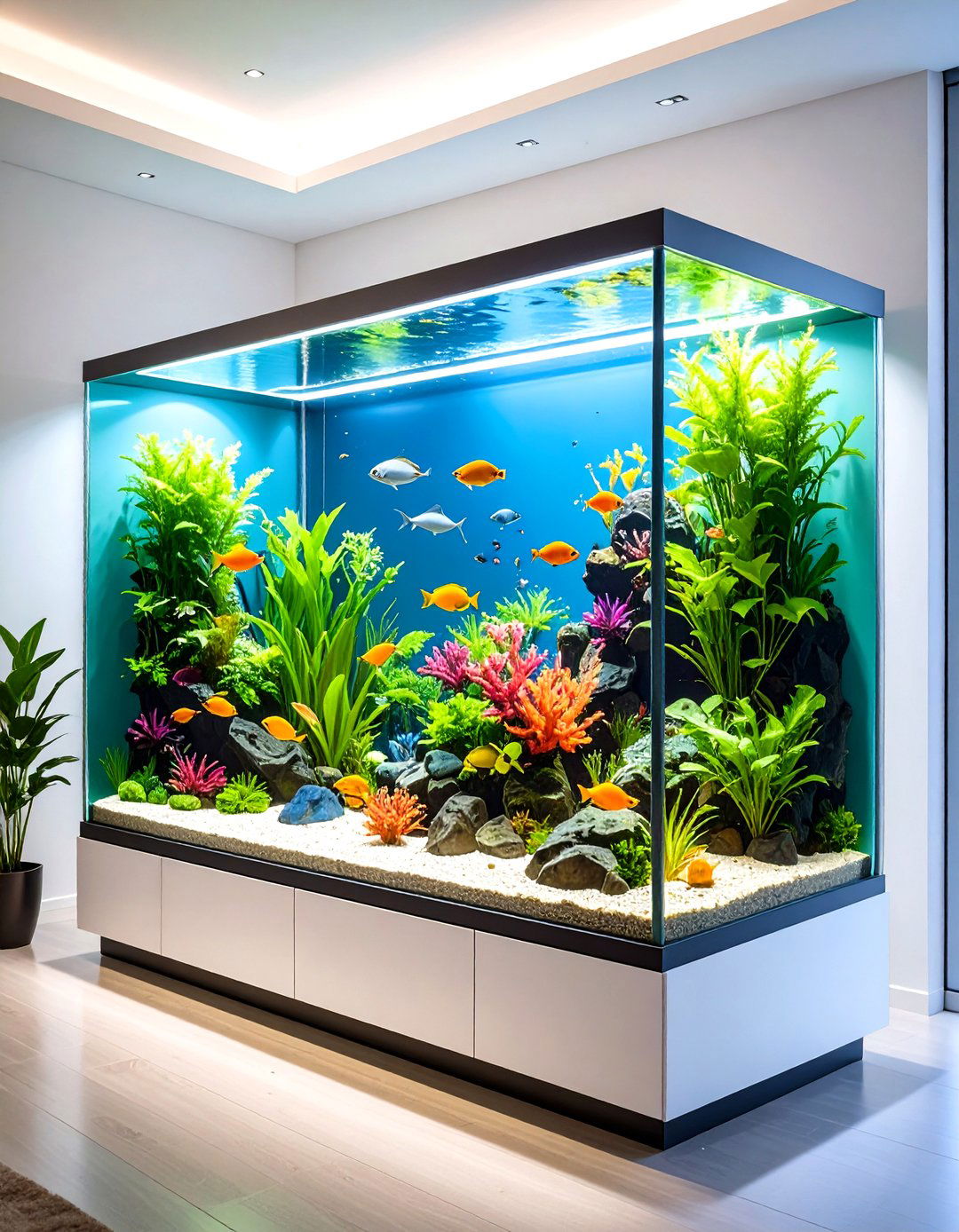
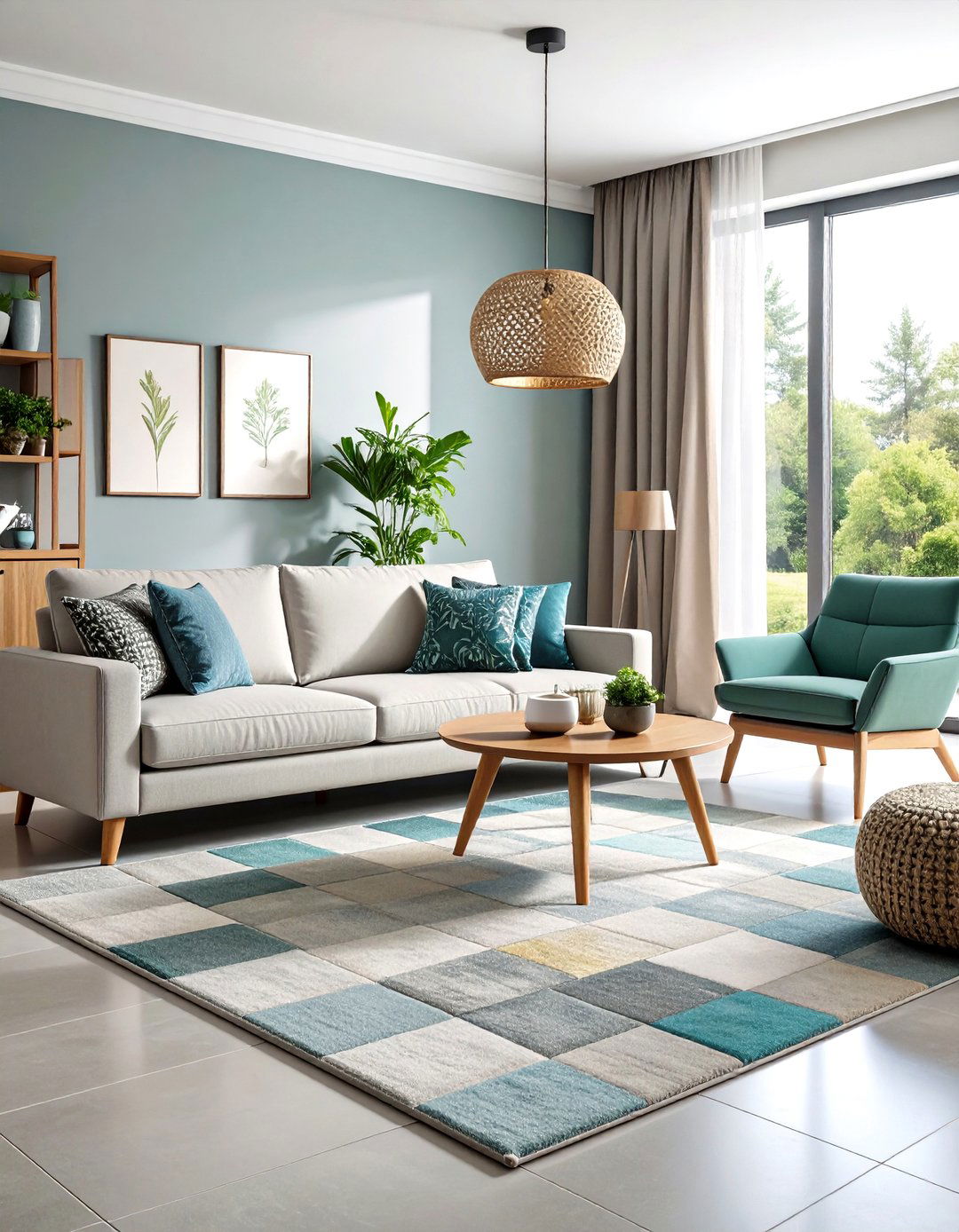
Leave a Reply